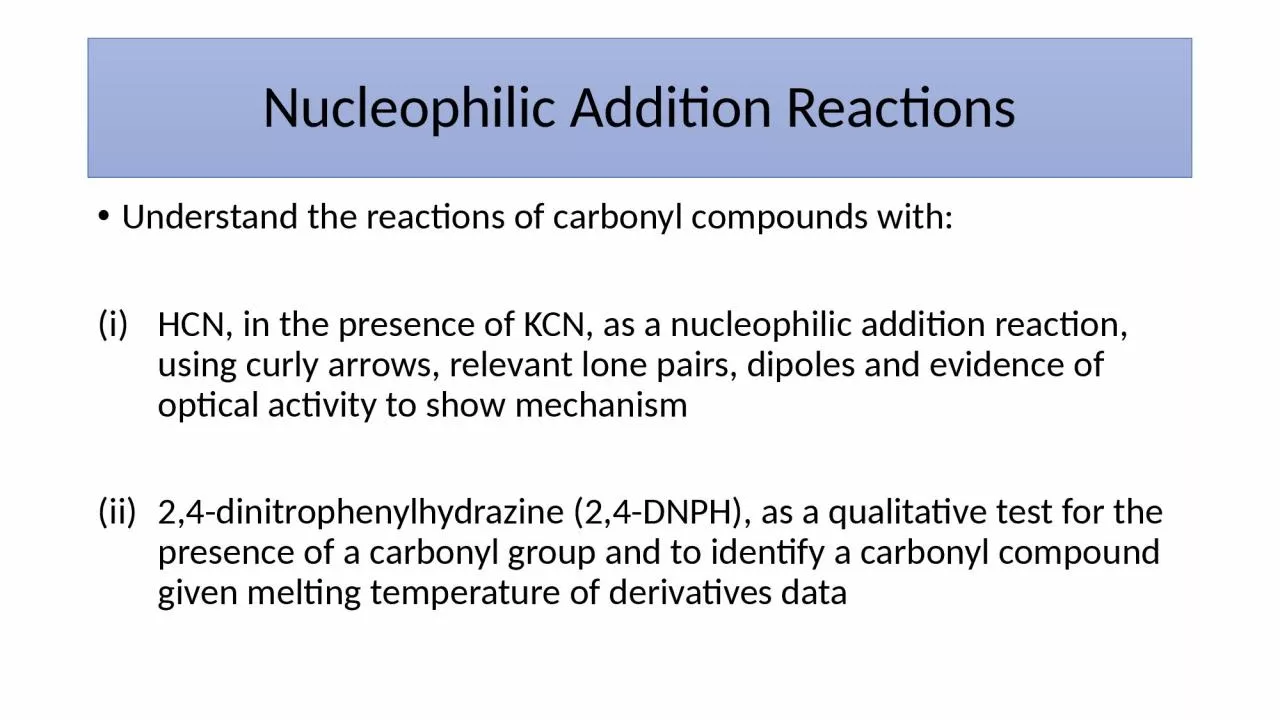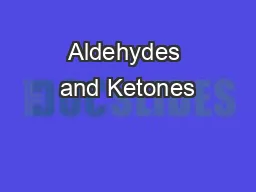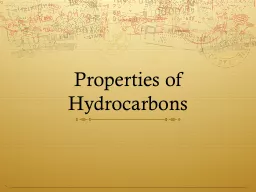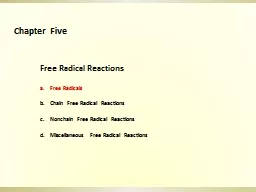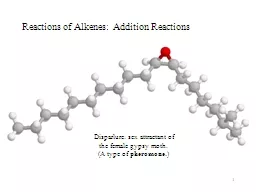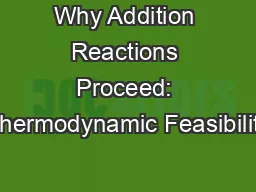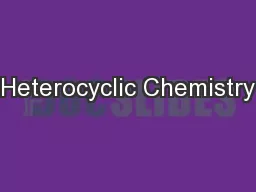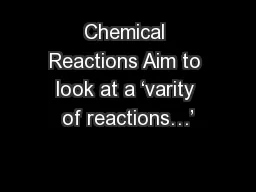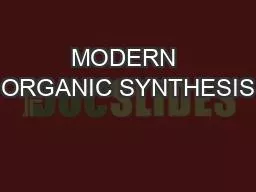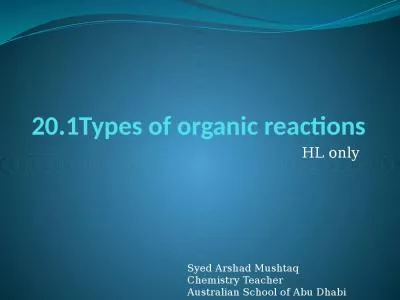PPT-Nucleophilic Addition Reactions
Author : Vikingwarrior | Published Date : 2022-08-03
Understand the reactions of carbonyl compounds with HCN in the presence of KCN as a nucleophilic addition reaction using curly arrows relevant lone pairs dipoles
Presentation Embed Code
Download Presentation
Download Presentation The PPT/PDF document "Nucleophilic Addition Reactions" is the property of its rightful owner. Permission is granted to download and print the materials on this website for personal, non-commercial use only, and to display it on your personal computer provided you do not modify the materials and that you retain all copyright notices contained in the materials. By downloading content from our website, you accept the terms of this agreement.
Nucleophilic Addition Reactions: Transcript
Download Rules Of Document
"Nucleophilic Addition Reactions"The content belongs to its owner. You may download and print it for personal use, without modification, and keep all copyright notices. By downloading, you agree to these terms.
Related Documents

